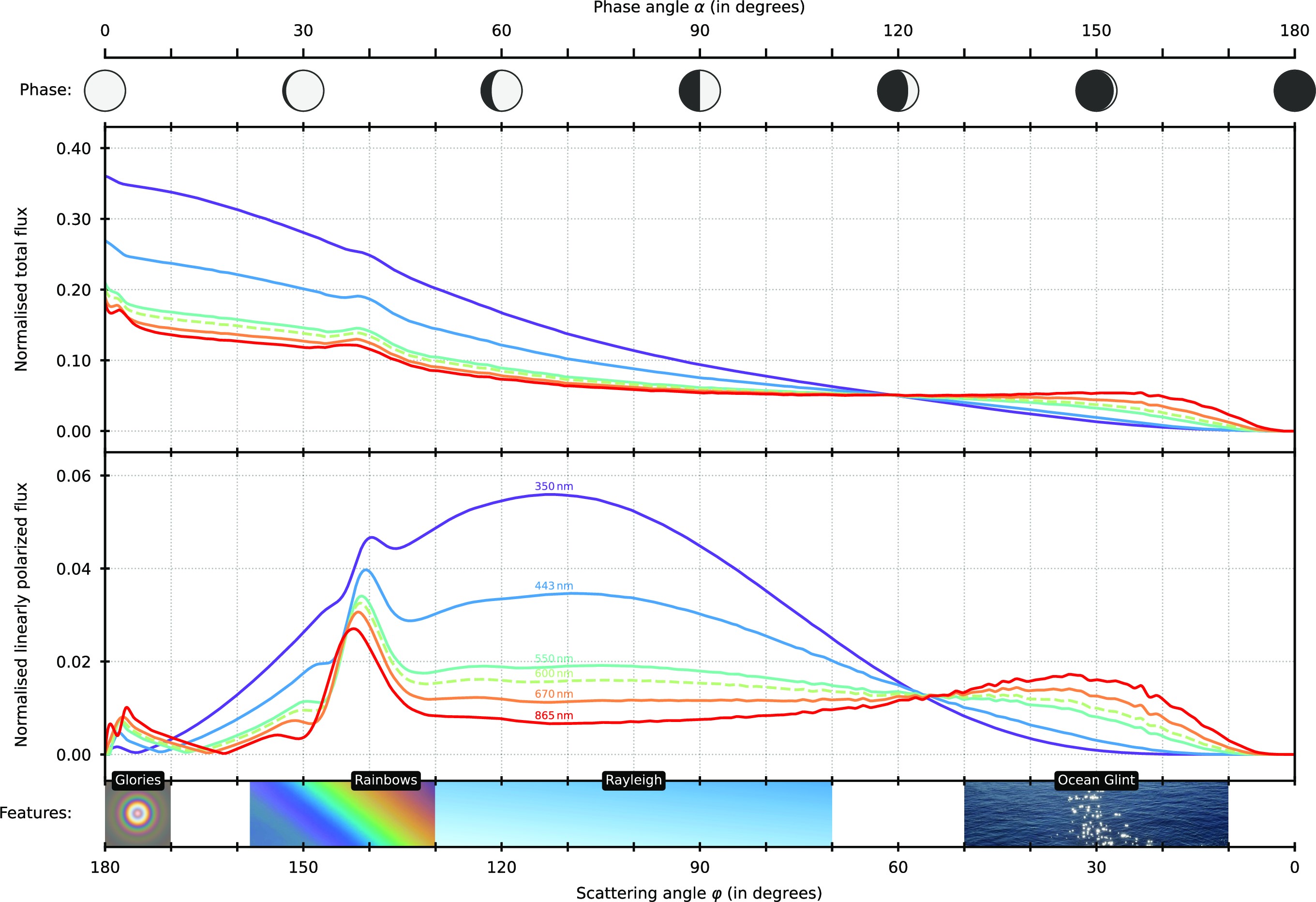Exoplanet and Brown Dwarf Atmospheres
Polarimetry has the potential to revolutionize our understanding of cloud properties in exoplanets and brown dwarfs, by providing critical constraints on cloud morphologies, heights, compositions, and particle size distributions that are unavailable through other observational methods. Brown dwarfs are considered close relatives of directly imaged exoplanets and studying their atmospheres is an established way to make progress on understanding super-Jupiter atmospheres while side-stepping the challenges associated with observing an extremely faint object (a planet) next to a bright star. I am currently focused on two projects that use polarimetry to study brown dwarf atmospheres: polarimetric observations of the Luhman 16 brown dwarf binary and the WIRC+Pol Brown Dwarf Survey. As I look to the future, I'm interested in using polarimetry to study the atmospheres and surfaces of exoplanets seen in reflected light.
Luhman 16
Luhman 16 is a binary brown dwarf system that is the third closest system to Earth! In 2018, I began investigating
the binary system using the polarimetry mode of the NACO instrument at VLT. We were able to make very precise measurements of the two objects and found that the
A polarization measured for the A component can only be explained by banded clouds like we see in Jupiter,
whereas the polarization measured from the B component could be due to either banded clouds and its inherent oblate shape. This result is incredibly exciting because
it represents the first time that polarimetry has been used to carry out this type of cloud morphological study,
and it opens up the door to a range of new studies using polarimetry on other objects. This work has now been published in ApJ.

A summary of the conclusions from our initial Luhman 16 study: the measured polarization for Luhman 16A can only be explained by banded clouds.
In April/May 2019, I returned to NACO with my collaborator Julien Girard to follow-up this detection and search for time-variability in the polarization signature over 4 nights. During these nights we were also able to obtain simultaneous photometric monitoring with the Speculoos (pictured below) and Trappist telescopes in order to match variations in the targets brightness with polarization variability. In this photo VLT can be seen in the top-right. We are currently processing this data.

WIRC+Pol
WIRC+Pol is a new polarization grating-based low spectral-resolution spectropolarimetry mode for the WIRC near-infrared camera at the Palomar 200-inch telescope. I am currently the project scientist for the WIRC+Pol project, an effort to use spectropolarimetry to understand the nature of the clouds in brown dwarfs. WIRC+Pol was first installed in Feb. 2017 and in 2019 I led the installation of a half-wave plate in order to reduce our instrument systematics to the levels needed to carry out a systematic survey across the L and T brown dwarf spectral types. We carried out a survey of ~20 brown dwarfs and we're in the process of writing up the results. Stay tuned!

The spectrum (top panel) and polarized spectrum (bottom panel) of a 10 Jupiter-Mass planet, by de Kok et al. 2011. Two models are shown: one with clouds at the top of the atmosphere, and one with clouds at a lower altitude (0.015 bar). While the spectra of the two models are nearly identical, the polarized spectra of the two models are very different. We hope to use WIRC+Pol to carry out studies to measure the polarized spectra of brown dwarfs in order to provide empirical measurements of the cloud heights. Ultimately we want to understand how these cloud heights (and other cloud properties) vary with brown dwarf and exoplanet physical properties, such as mass and temperature.
Head over to my Instrumentation section for more details on the instrument.
Atmospheres and Surfaces with the Roman Coronagraph Instrument and the Habitable Worlds Observatory
In the Solar System, polarimetry has was most notably used to
identify the cloud species at the atmosphere of Venus: Sulphuric Acid. I am interested in using polarimetry to study
the atmospheres and surfaces of exoplanets seen in reflected light, using the polarimetry mode of the Roman Coronagraph
Instrument (CGI), and evenutally, with an polarimeter on the Habitable Worlds Observatory (HWO).
As a member of the CGI community participation program core team,
over the next few years I will be working towards making the mission a success and ideally demonstrating some of the "best effort"
modes, including a polarimetry mode. I am currently the co-lead of the Data Reduction and Simulations working group within the CPP and
always looking for more collaborators.
With HWO, we will for the first time have access to reflected-light Earth twins.
However characterizing their atmospheres and surfaces will require an extensive array of tools. Polarimetry is particularly well-suited for identifying
surface water, through its polarized glint. In a recent paper, led by Sophia Vaughan, we explored the number of systems accessible to HWO as a function of
inner working angle. You can see the paper here.
The Figure below nicely illustrates some of the features that can be highights by seeing a reflected-light exoplanets at different phase angles in total intensity
and in polarized intensity. Over the next several years I will be workign towards understanding the full roll of polarimetrying within the HWO mission.
